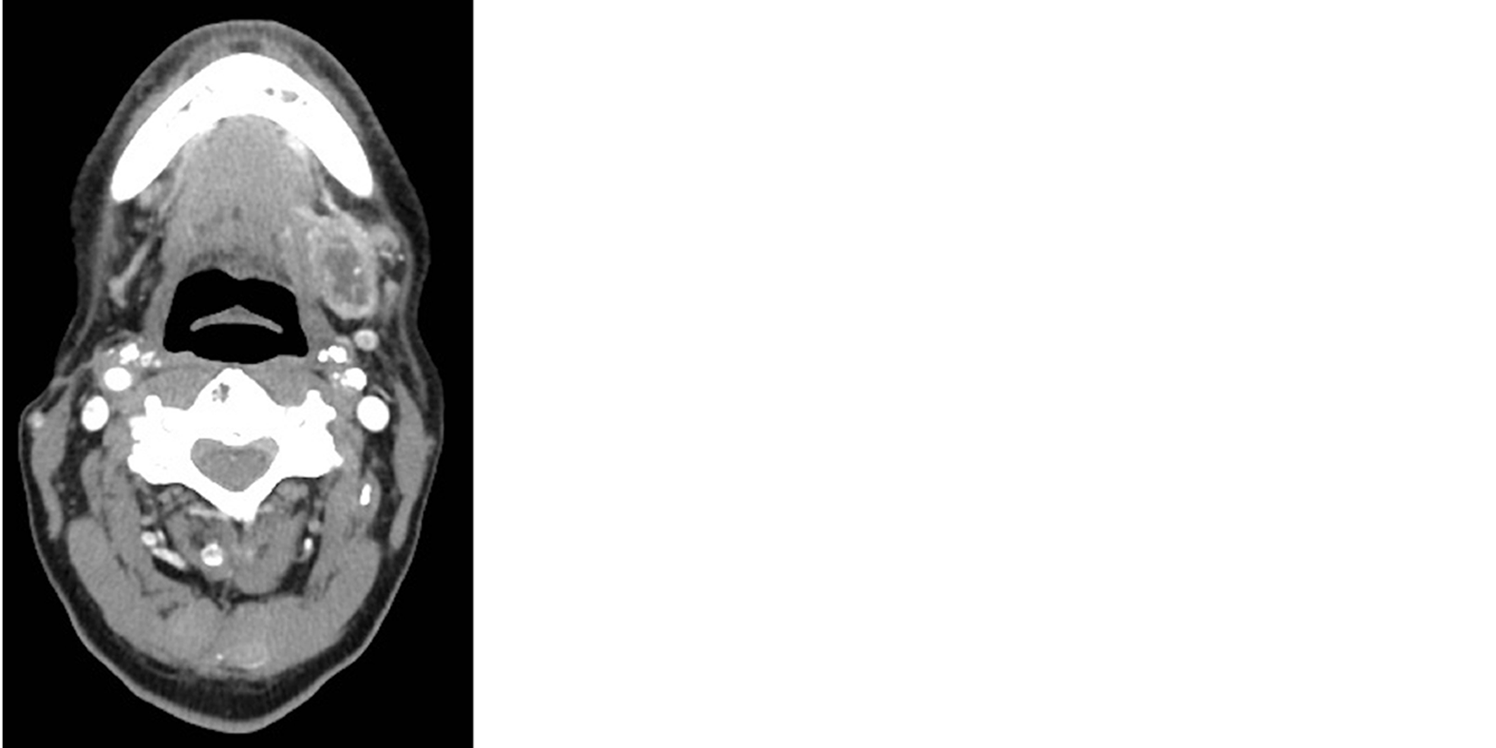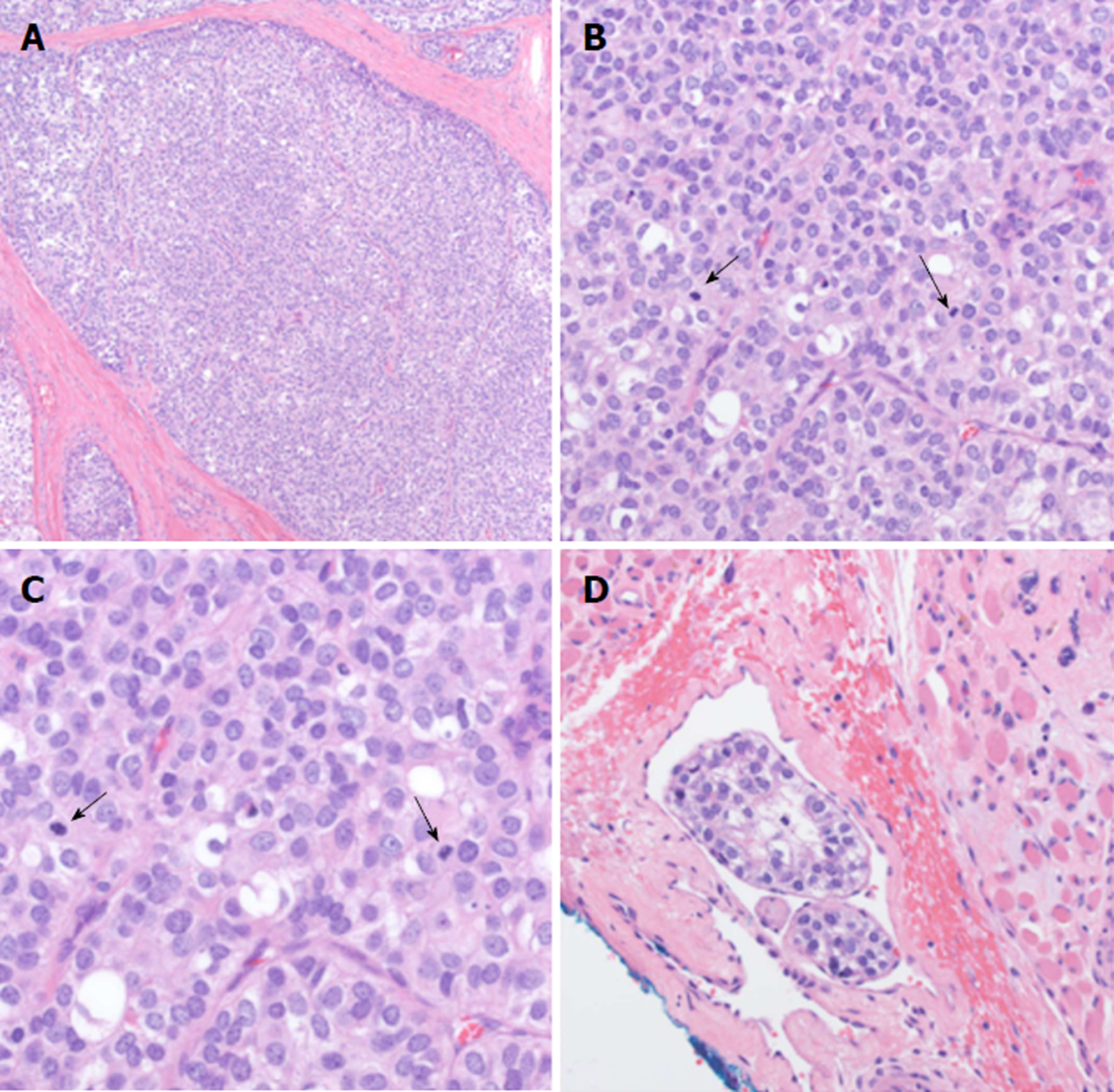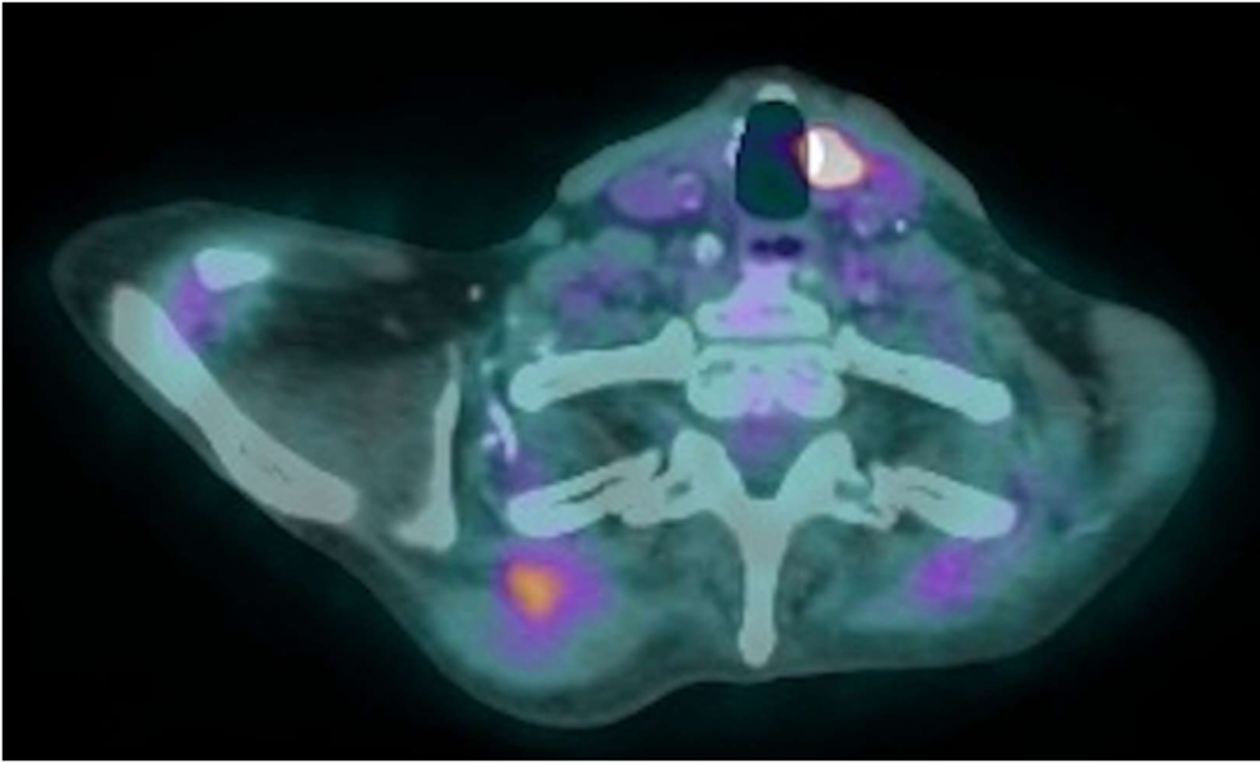Copyright
©The Author(s) 2018.
World J Clin Oncol. Dec 20, 2018; 9(8): 200-207
Published online Dec 20, 2018. doi: 10.5306/wjco.v9.i8.200
Published online Dec 20, 2018. doi: 10.5306/wjco.v9.i8.200
Figure 1 Primary epithelial-myoepithelial carcinoma presenting computerized tomography scan.
Computerized tomography scan showing heterogeneous mass determined to be primary epithelial-myoepithelial carcinoma in the left submandibular gland.
Figure 2 Hematoxylin and eosin stain of epithelial-myoepithelial carcinoma specimen.
A: Epithelial-myoepithelial carcinoma (EMC), 10 × magnification; B: EMC, 40 × magnification; C: EMC, 60 × magnification; D: Lymphovasuclar invasion, 40 × magnification. Arrows indicate mitotic figures.
Figure 3 Neuroendocrine tumor.
Positron emission tomography/computerized tomography chest scan showing moderately 2-18F-fluoro-deoxy-D-glucose avid nodule of the right upper lobe.
Figure 4 Hurthle cell adenoma.
Positron emission tomography/computerized tomography scan neck scan showing intensely 2-18F-fluoro-deoxy-D-glucose avid focus in the left medial thyroid.
- Citation: Khattab MH, Sherry AD, Ahlers CG, Kirschner AN. Radiation-associated epithelial-myoepithelial carcinoma among five secondary malignancies: A case report and review of literature. World J Clin Oncol 2018; 9(8): 200-207
- URL: https://www.wjgnet.com/2218-4333/full/v9/i8/200.htm
- DOI: https://dx.doi.org/10.5306/wjco.v9.i8.200












